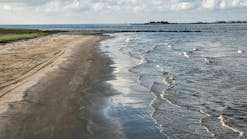Hawaii Receives $23.3 Million in Water Infrastructure Projects
The U.S. EPA has awarded more than $23.3 million to the state of Hawaii to support water infrastructure projects.
These projects will help protect surface water and provide safe drinking water to communities, according to the Business Journal.
The $23.3 million in state revolving funds will go to the Hawaii Department of Health, which is responsible for ensuring that wastewater and water systems are in compliance with federal and state clean water and drinking water requirements.
The funding is available for a wide range of water infrastructure projects, including: modernizing aging wastewater infrastructure, implementing water reuse and recycling and addressing storm water, as well as for loans that help drinking water systems install treatment for contaminants.
“EPA is delivering on its commitment to modernize water infrastructure and improve public health and environmental protections in the Pacific Southwest,” said EPA Pacific Southwest Regional Administrator John Busterud in a news release. “EPA’s $346.8 million contribution to the State Revolving Funds in the region will enable more communities to make the investments needed to ensure safe drinking water and sanitation.”
The funding was finalized in October following delays due to the COVID-19 pandemic. Out of the $23.3 million total in federal grant funding, a total of $12.3 million was allotted to the Clean Water State Revolving Fund and $11 million to the Drinking Water State Revolving Fund.
Currently, the State of Hawaii Department of Transportation, Highways Division, Oahu District (DOT-HWYS) continues to implement its proactive comprehensive Storm Water Management Program (SWMP), according to Hawaii’s Storm Water website.
This initiative is being taken to comply with Hawaii’s National Pollutant Discharge Elimination System (NPDES) Permit for the Oahu municipal separate storm sewer system (MS4). The Oahu MS4 qualifies as a large municipal separate storm sewer system since it services a population greater than 250,000.
It is therefore subject to permitting requirements under the NPDES Program for storm water discharges. This program in particular is designed to reduce, to the maximum extent practicable, the amount of storm water containing pollutants from entering and ultimately discharging into the streams, rivers and ocean.






